If your pool is new, you may see a foam strip installed when the deck was poured, separating the deck from the coping stones. This is your “perimeter expansion” joint. Expansion joints that run from the pool “out” are called lateral “expansion” joints.
Expansion joints are placed between the pool deck and the pool, or the home and patio, to allow for concrete slabs to expand during warm weather, without pushing on the pool wall and pool coping.
Not all pools need caulking, just in-ground pools with concrete decks and coping stones as shown above; only about 3 million pools in America, that’s all.
What Does Caulking Do?
One of the strongest forces of nature is ice. When water freezes, it will expand with great force. Ice can break steel, concrete, rock and just about anything else that gets in its way. Secondly, during warm weather, concrete expands. In a battle of the vertical pool wall and the horizontal pool deck, both expanding, the pool wall loses every time.

- Prevents the expansion joint from filling up with dirt, grit and material that removes expansion space. If this happens during warm weather, the expanding pool deck will bump into the pool, cracking the pool wall and/or loosening coping stones and tile.
- Prevents water from filling the joint during winter, which seeps into the backside of the pool wall and beneath the coping stones. This can slowly loosen coping stones and tile all at once, or over many years.
And besides protecting your pool wall, tile and coping from cracking and falling off, new caulking also looks great in 3 colors: bone, buff, or gray.
How Much Caulk is Needed?
The number of tubes of caulk that you would need depends on the width of your joint, the length of your joint and the depth of the caulking. Get out the measuring tape, and measure the complete perimeter of the pool.
Depth is normally about 1/3 – 1/2 of the width measurement. The width of a pool expansion joint can vary from pool to pool, and from slab to slab, but most fall between 1/4″ to 1″ in width. Measure your joint width every 5 feet, all around the pool, to find an average width.
How to Apply Pool Caulk

- Start by removing old caulk by slicing it off close with a sharp razor knife.
- If debris or soils have filled the joint, use a pressure washer to remove.
- Insert foam backer rod in areas where it is missing, to an even depth.
- Load a cartridge, snip the tip, and squeeze into the joint.
- Move rapidly enough along so the joint fills up, but does not overflow.
Tips to DIY Pool Caulking
- Keep an old rag in your back pocket, and a large sheet of cardboard moving with you, to set down the caulking gun.
- Find a large quart-sized caulking gun in the paint section of any home or hardware store
- Keep the dogs and maybe the kids out of the backyard for the day.
- Pool caulk will adhere to damp surfaces, but be sure the joint is dry, and that bonding surfaces are free of grease and dirt.
- Apply pool caulk in temperatures of 50° to 80° for best results.
- Clean-up spills, drips or hands with mineral spirits or xylene before curing.
More Pool Caulking Tips
- Measure your joint width and depth carefully, to buy enough caulk.
- Keep short pieces of twine handy for any ‘runners’, voids where caulk runs through.
- Self-leveling caulk will seek the lowest level, or the lowest side of the pool or deck.
- Wear old clothes, move around the pool slowly with a large piece of cardboard.
- Taping the deck is not necessary and will not stick evenly, except on finely cut stone.
So please get out there and look over the pool caulk strip around the pool. You could get another winter out of it, or maybe there are some spots that need patching.


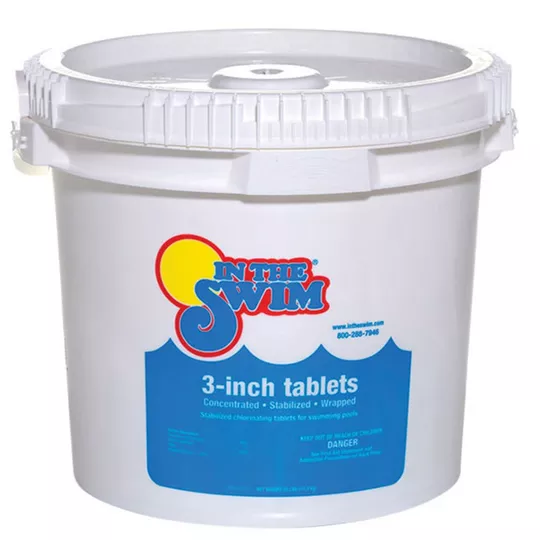
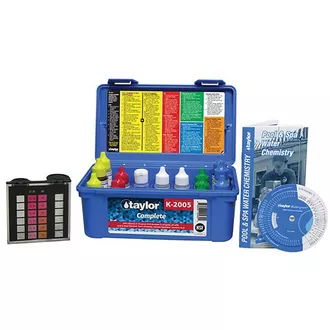
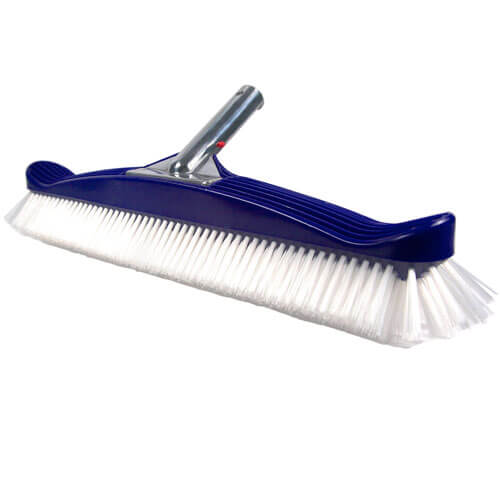

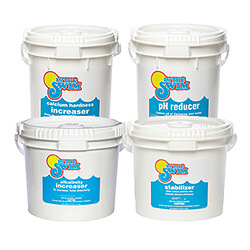

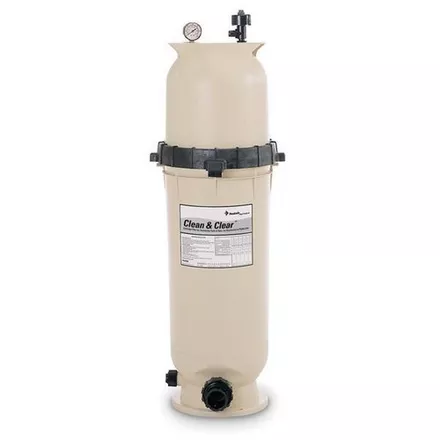
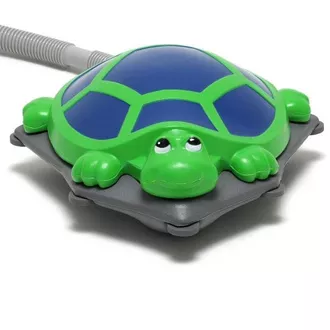
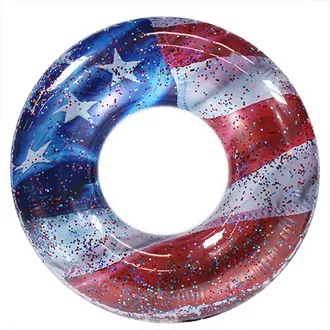

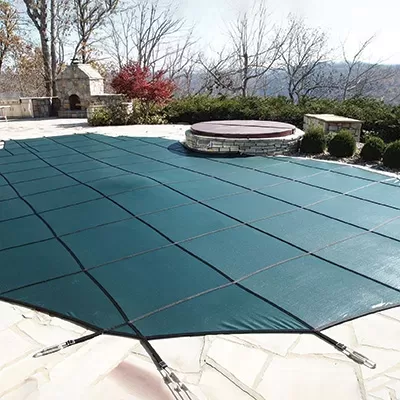
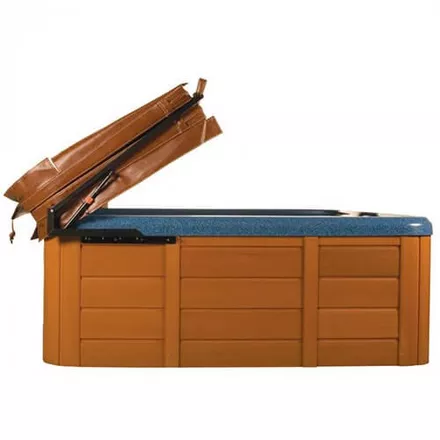

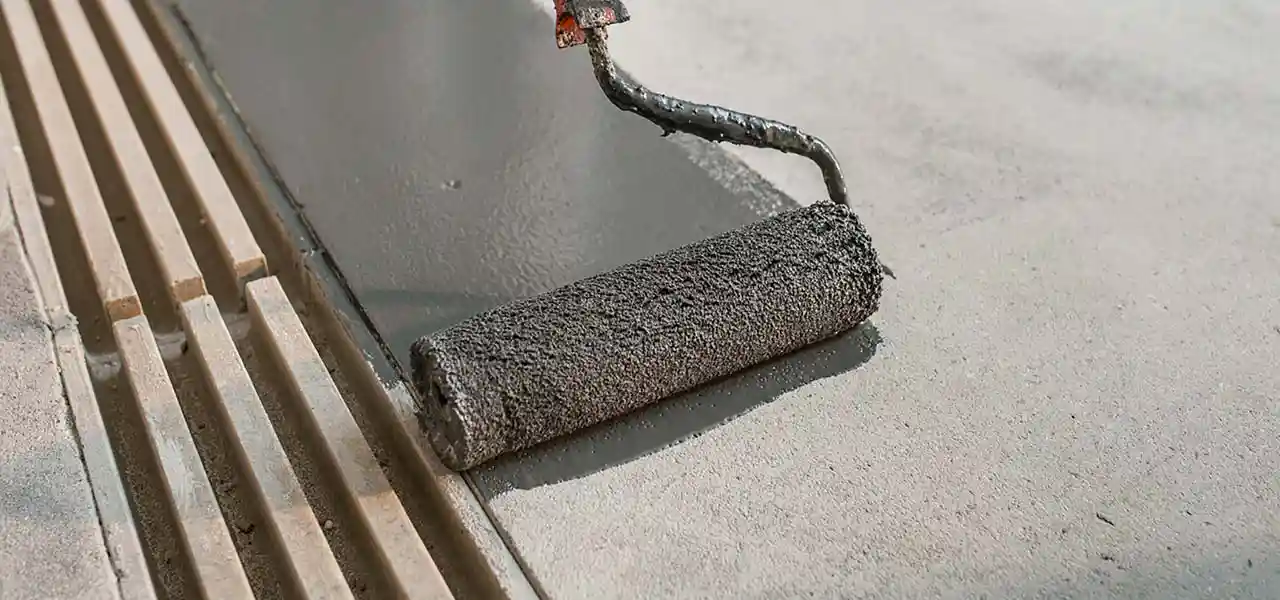

I would just like to thank you Davy for all your information you have shared. I wrote you back in July and have finally finished up the grinding and grouting of the joints between the coping bricks. It was a big job and I am glad I didn’t have to pay someone to do it. Definitely can do it yourself if you are careful and have an eye for perfection. I will finish the caulking of the expansion joint this weekend and then close the pool for the winter. Next spring I am ready with the supplies I got from IN THE SWIM to re- tile and grout and caulk. Thanks for walking me thru the steps Davy
Should the soace between the coping and the Concrete pool deck be larger than an inch? Should it be filled in with gravel before the caulking is done?
Hi Cheryl, the width is usually under one inch, but if the deck slab has slipped away from the pool… Do not fill with gravel, that defeats the purpose of an expansion joint, to allow room for the deck to expand, without hitting the pool. Use Foam Backer Rod to fill, and support the caulk, so it won’t run down, down, down…
Hi, I live in the Northeast and I have a gunite pool with cambridge paving stone coping and pavers. The pavers sit on a concrete slab, and the expansion joint varies in width around the pool. A string of 10 tiles starting popping off, which is where I found a large crack running along the top portion of the gunite. The expansion joint looks like it formed holes and feels empty when I put my finger in it. 1) Can I only replace a portion of the expansion joint? 2) What’s the best way to patch the crack in the gunite? Many thanks!
Mike, yes you can patch a portion of the caulk. The larger problem however is that the pavers or sub-deck or both, are pushing on the pool wall, and have broken the pool wall, which is called “Beam Damage”. The fix for that is to remove the coping stones, then place rebar into the top of the wall, with wire connecting. Place forms and pour a new beam, then replace tile and coping. Not a small job. To prevent recurrence, you will want to be sure that there is an actual ‘expansion joint’, a space that allows room for the pool and deck to expand in hot temps, without hitting each other. Currently, it does not exist, so you will want to ensure that first…
I live in Texas. Can I still apply it in high 90s temps?
Yes, altho it will be more runny, less so if you put the tubes in the fridge and pull them out before using…
Thank you SO MUCH for this site!!! We are new homeowners living with extreme weather conditions (high desert -HOT sun exposed most days and hazardous wind speed -nights and winter)
The mortar and our expansion joint caulking seem to be crumbling from the elements. I’m wondering if there are protective additives/ sealants etc. we need to use?
Hi Sarah, yes you can seal your coping stones and mortar, just be careful not to let it get into the pool, tape plastic sheets and let float on the water, and spray or paint on any concrete sealer. We have several LayorCare sealers here: https://www.intheswim.com/c/surface-preparation-repair
I noticed some crack between the coping stones. (Not the expansion joint between coping and deck ) When I removed one I can see there is no mortar in between. They put some only on top, so we do wouldn’t see the gap.
What should I do now? Do I need to remove and fill the gap? What material I should use – mortar and Grout or cocking or white cement. Please guide me. Thank you.
Hi Shibu, use a medium bed mortar, in a color that matches what is already used (white, grey or tan). If it looks like the pool plaster, some builders use pool plaster mix, you can use EZ Patch 1, for the best match in color and texture.
Hi Dave, I want to caulk the slightly sloped expansion joints that run perpendicular away from the pool. It sounds like the self leveling caulks are to liquid. Is there a thicker semi self leveling caulk you would recommend. If not what do you recommend? Thank You Sir
Hi Dan, the Vulkem SSL (semi self leveling) should be fine for the standard sloping deck, when applied on a cool morning, and not in the heat of a hot day. Try one tube, and see how it goes, but I think you’ll be fine. The alternative is called gun-grade and is hand troweled, despite the name, and very messy and hard for a novice to get right.
Hi, I see some mud getting built between coping and tile along the perimeter. I have cleaned it many time but it keeps coming after few days. I also see mud built around the expansion joints. Since the joints are covered by plastic strip I dont see what is underneath. Does it mean the caulk of expansion joint has gone bad? Have you see this situation before? Please advise.
Have not seen that before, it could either be insects like wasps, or it could be mud washing under the deck, or under the coping stone, having found a void and being pressure squeezed out
I have saw cut control joints throughout my concrete around a fiberglass pool. The saw went through rebar in several cuts and I can see rust. The cuts are skinny and about 1 inch deep. Is there something I could put in the saw cuts to seal it or stop the rebar from bleeding rust? Thank you
AV, yes you can put a liquid rubber in those spots, that will help stave off the rust bleeding, at least for a while. If the cuts go all the way thru the bottom of the concrete, then you can caulk the joints fully, and then any bleeding rust will typically run down, into the earth, and not up over the concrete.
I have read your DYI info and now I am going to attempt to do the removal and installation myself. Great directions. Question, I got from a construction friend the following chaulk that he is giving to me. Will this brand and type work for this situation. It will save me having to purchase caulking. One Component Elastomeric, Self-Leveling Polyurethane Sealant. It says for parking and sidewalk/
Yes Ron, that would be fine for use as pool caulking. Go for it!
Hi Davy,
I have a question for you. My pool is currently being built. It’s a steel wall liner pool with concrete bottom. We added coping stones with mortar around the perimeter, on top of the steel and concrete deck footing which supports the back portion of the stones.
My question is, the joint between the steel wall and where it meets the coping stone on the under side should have a nice sort of finished smooth joint. This wasn’t done.
Do you recommend mortar to create that nice seam or can we we use a bead of caulking or PL polurathane type glue adhesive to create the joint?
Hi Sami, if I understand the question correctly, typically when coping STONES are used, they are set on top of a bed of mortar, which is laid on top of the pool wall, where it turns over 90 deg. to a horizontal shelf. Sometimes an extension to the shelf is created for wider stones, but they usually are set on mortar. Now, I suppose that you could use Liquid Nails or something to affix the stones, although I’m not familiar with how well that would bond.
Thanks for the reply. Yes they were affixed to a mortar bed. The problem is they didn’t actually smooth out the joint under the stone where it hangs over the steel wall. It should have been smoothed our similar to the mortar between bricks. So I’m wondering if we can run almost like a caulked bead or something similar that would be water proof. Similar to how the corners in a shower are caulked.
I guess a picture would be best to show what I mean exactly.
Sami, yes I understand now. not smooth under the coping, should have run that ‘tool’ across it, to create a semi-round smooth finish. If it is overhanging (the mortar), I suppose you could shave it off carefully, with a 4″ grinder, and then repack it with mortar, or yes you can use a caulking, any outdoor caulking in a dark tan or dark grey color would work and look nice. Not a pool caulk, but just regular exterior window type caulk would be good.
I have a plaster pool with tiles and a brick type coping at the top. There is caulking between the very top of the tiles and the coping – maybe 1/4″ wide. It is pulling away from the edges. Do I need to remove all the old caulk before I fix it and what is the best caulk to use? Also, do you recommend that I use a clear waterproof silicone sealant to fix the grout between tiles that has cracked. I have seen this recommended by other sites. Thank you so much for your response.
Hi Susanne, for the caulking above the tile, is it a plaster looking (cementitious) grout, or a soft caulk like sealant? If plaster looking, you can do the tile grout and the area above the tile with EZ Patch #1 plaster mix, and a grout float. That could be best. If the above the tile sealant is rubbery, just use an outdoor caulk from HD/Lowes. You don’t have to remove it all, you can patch what needs fixing, and leave the rest for another time. For the tile grout, I don’t really like the silicone grouts, it’s kind of messy to work with, and always looks shiny and rubbery. I much prefer the look of a cementitious grout on pool tiles. Either EZ Patch #1 Plaster Mix or EZ Patch #4 Tile Grout.
Thank you so much for your quick reply! I really appreciate the advice. The caulk above the tile border is rubbery so I will get some outdoor caulk at Lowes… When working on the grout between the tiles I will use EZ #1 or #4. How do you usually apply this? Some of the cracks are barely noticeable so I am not sure how to squeeze the fresh grout into those areas. Some videos show grinding out the grout first before reapplying the new. I hope I don’t have to do that. That is why the silicone caulk seemed appealing – you can squeeze it into the cracks with your index finger. There are also some small chunks of cement broken around the skimmers – can I just use the EZ #1 or #4 to ‘glue’ those back in place? And the dark orange coping tiles (bricks) around the edge of the pool also have some cracks between the cement and the brick. Should I use the same #1 or #4 for that repair as well? Thanks again for your kindness of answering these questions.
HI Susanne, there is a tool that is sold to scrape grout out of grooves, or you can use a screwdriver. It is also good practice to clean and acid wash the tiles first, as new grout will not stick to old grout that is oily or scaly. If you grind it out, you don’t need to clean it, but be sure to remove any loose particles. For the skimmers, don’t glue the chunks back in, replace the chunks with plaster mix (lower the water first). For the coping bricks, the grout is likely a brown or tan mortar, which you can get at a home/hardware store, you don’t want to use bright white plaster mix. Same applies, you want to chip out any loose material, enlarge the crack if needed, so the new mortar will stick, as a thin covering will not bond, will not stay in place.
Thank you again for your quick reply and great suggestions. So, didn’t really want to hear I would have to grind out the grout (I have many many hairline cracks in the tile grout as well as the coping bricks.) But better to do it right than continue to have problems. How deep and wide do you suggest I go with the grinding ? You don’t happen to have a video about it do you? 🙂 Of course I don’t want to use an electric grinder around water, so am thinking a dremel tool might work unless you have found something else that works better. And acid wash is a new process for me – what do you use and how is it done if I were to use something else than a grinding tool. I hope this is helping someone else out there too – I am sorry I am taking up so much of your time with my questions. Thanks again.
The grout will literally fall out very easily with a manual hand tool. No need for an electric tool (although you can try the Dremel tool, and if it works for you, then fine. Normally, just scrape it roughly with the grout tool, just to remove 1-2 mm of material, enough to fill-in with. For acid washing, mix 50/50 muriatic acid and water in a clean spray bottle, or pour from a flower watering can, let it fizzle for one minute, then rinse quickly and thoroughly. This will remove scale and etch the grout, to improve bonding. But it won’t remove grease, but TSP will, so you will want to apply it in the same way, before the acid usually, to strip off any grease/oil that will also affect bond.
Hi Davy,
My dog ran across the edge of the pool and dragged wet caulk all over our slate patio. Do you have any suggestions how to get it cleaned up? The installer told me to let it dry and now it is a mess. Would appreciate any suggestions. Thanks so much.
Hi Kathy, you could try some solvents like Xylene and a scraper or wire brush, then a pressure washer to remove the remainder. There are also some caulk remover solvents like Krud Cutter, and Goo Gone makes one too. Look in the stain and sealer aisle at HD/Lowes
After inspecting the pool pretty thoroughly I have found that every 4-5 coping bricks have a hairline crack where they have pulled away from the mortar. I tried digging some of the mortar out but it’s too hard. I know these cracks need to be filled so water doesn’t continue to seep behind the pool walls but I just don’t see how I will be able to grind out the mortar in so many cracks. I found a product at Lowe’s Quikrete Concrete Crack Sealer and it is very smooth and thin and seems like I could maybe squeeze that down in these tiny cracks to fill them in. I am hoping that either with my fingers or maybe a rubber tool I could get enough in there to work. Are you familiar with this product and if so do you think it is worth a try? I decided this is actually the first step before repairing the tile grout. And there is a spot where the coping bricks are actually loose and I can pull them up from the edge of the pool. Which of the EZ patch products would you recommend for attaching them again. Thanks as always for your suggestions.
Hi Suzanne, the way to grind them out would be with a 4″ grinder with a diamond blade. You can buy these really cheaply at places like harbor freight, with blade maybe $60. Or you could rent one. then you can open them up to about 3/16″ to where the filler will really bond well and be substantial enough that it won’t be pushed out or washed out. And if you are going to do that you could use a colored mortar that may closely match the existing color (maybe the product you mention comes in colors). You may also be able to push enough in there with fingers or putty knife to seal it for the winter, but with any movement, it will eventually push out in many areas. For the loose bricks you want to use a medium bed mortar, I don’t think we have an EZ Patch product for that, but you can buy at lowes/HD in a color that will match.
What do you recommend for the expansion joint between stone coping and concrete pavers for a pool in the mid-atlantic area? I’ve been told to use Polymeric Sand instead of caulk since the gravel and sand base the pavers are set on allows for plenty of drainage. The existing Polymeric sand requires annual repairs to fill gaps where the sand has washed away.
Caulk is used for two reasons, one to keep out water and two to keep out debris. In your situation, you could just use Polymeric sand, but it will get in the pool and wash onto the deck, and need to be redone every year. If your pavers are grouted in between, I would just use regular backer rod and caulking, it will look nicer and last 5 years before it needs any attention. I would use stone dust before I’d use polymeric sand, because it is heavier and won’t need so much work, but will still be messy.
Thanks for the quick reply. Our pavers are jointed with Polymeric sand not grout. Would you still recommend backer rod and caulking over stone dust for the joint between the Coping and pavers?
In that case, since the pavers are jointed with sand, then go ahead and do the expansion joint between pool deck and coping stones, in polymeric sand. With exception if there is any paver deck built up against the wall of a building, so the deck has no room to expand outward, in hot weather
Hello, We are in Arizona and have an in-ground pool with tiled walls. At the top of the walls, just before the cool-decking starts there is an existing strip of gray caulking that is old and cracking. I’m not sure if it’s acrylic or silicone caulk but I’d like to remove it and re-caulk with new. What would be the best caulk to use? Would it matter if there is a bit of moisture in the gaps? In this case I would be in the water with the caulking gun to apply the caulk around the perimeter. Thanks!
Hi Tom, in general, the joint should be as dry as possible. You can look for some press-in-place caulking strips, or use any exterior caulking for homes, it need not be special pool caulk in this area above the tile.
Hi Dave… I’m writing because I see you’ve had some very recent dialog. I have a lot of stuff going on with my pool deck, any feedback you could offer would be appreciated.
I moved into my house in (southern CA) in 1997, the pool was already here. Don’t know exactly when it was built, or by whom, prior homeowner didn’t leave records, but I believe it was built prior to 1994, when the Northridge earthquake seems to have lifted some of the slabs of the pool/yard decking, maligning some of the expansion joints. The vinyl “zip strip” material in the expansion joints has been in a state of disrepair for a long time, so one of my projects during quarantine was to remove and replace. Over the last weekend, I removed all the old vinyl, and am now trying to figure out how to move forward.
Deck-o-Seal has been suggested, but the concrete deck cantilevers over the edge of the pool, so expansion joint troughs that approach the edge of the pool continue down (vertically) along the 4″ face of the deck… Deck-o-Seal would not work at the 5 troughs that extend over the edge. Deck-o-Seal’s Renu-Strips have also been suggested, but would not work where the slab on one side of the expansion joint has lifted, sometimes as much as 1/4-3/8″. I am thinking about having a concrete contractor come out to grind down the pads that are not level.
Would love to be able to send photos. Again, any feedback will be very much appreciated.
Hi, Grinding down the height difference can be done, like they do for sidewalks that have lifted. It’s an obvious repair though, the color is different undeneath the surface. Or using a Deck O Seal type caulk (Gun Grade caulk), that is troweled in place, can be done at an angle, from lower to higher, to reduce the trip hazard. For slabs that are really tilted and have standing water issues, you may be surprised at the cost to remove/replace, maybe surprised in a good way even! Might only be $5 sq ft., if you have no access problems for concrete trucks and work trucks.
I have a fiberglass pool with the concrete coping over the edge. I need to caulk the area where the concrete and fiberglass meet as there is small amounts of sediment coming into the pool. The gap is no larger than 1/8th of an inch. Can you recommend a sealant or caulk that will adhere to the concrete and fiberglass
Hi Lynn, Try Loctite PL S10 10 fl. oz. Concrete Crack and Masonry Polyurethane Sealant – you can find locally.
Is the same type of caulk suitable for the bead above the tile and just beneath the coping? The bead in my spa is about two inches wide and 20 feet long.
Hi Tony, no you can’t use self leveling caulk in vertical joints. You can use Loctite PL S10 10 fl. oz. Concrete Crack and Masonry Polyurethane Sealant
Thanks for your helpful site. Our pool caulking is separating, but only on about 10-15% of it with a decent crack, under 1″. If we clean out the dirt/tree residue, could we do a temporary patch for the bad section ourselves, meaning just filler versus removing all prior masting? (One reason also is the desire to redo the pool deck in 2-3 years.) There are a couple of other sides of the pool which have very small cracking in the calking, almost hairline. Any recommendations for a short term (1-2 year) filler to prolong the need to redo the entire pool? Would you recommend the same material for both size cracks?
When watching DIY, they all show to remove all the old caulking. Is it a bad idea to just try to do a patch approach? Thanks!
Hi Mary, you could do the patch approach, but you will likely need to do some cutting of the old caulk, and cleaning, to make a good patch that will bond well, and be thick enough to work. You also may need to put the caulk ‘cuttings’ or foam like backer rod, under the hole, so that Self Leveling caulk will not run down – down – down, wasting your caulk and your money.
Hi Davy
I had my 2 skimmers replaced and, when they replaced the concrete pad around the skimmers, they failed to leave space for the expansion joint. The ‘new’ concrete is only about 3 feet wide (measured along the side of the pool) and about 3 feet back from the pool. So, about 9 square feet each. My question is this: do I have to cut out the concrete that buts up to the new coping? or is this to small an area to worry about?
Hi Steven, I’d not worry about it, unless there is a wall on the outside edge of the deck. If it is just grass or earth, it will expand in that direction. You may notice some cracking at the junction of the pool coping and new pad. If you have a saw, and want a little project, go ahead and cut it out, but it will probably be ok.
The self leveling caulk ran over the coping and pavers. How do I remove caulk once cured?
Hi, you can scrape it off with a razor blade or scraping tool, then work on the residue with a plastic or wire wheel on a drill.
Can I use cement joint filler instead of a self leveling filler on my pool. 2/3 of the pool is cement only a small portion is flexible seal. What I read it seems you only need a flexible joint if you live in a cold climate area,am in southern California.
It’s true that the expansion of your pool will be less than other pools in climates that fluctuate more, but your pool moves every day, or expands I should say, as daytime temp increases. In the areas where you have flexible seal, is there a wall on the outside part of the deck, or no room for the deck to expand outward? It can be dangerous to generalize about the need for flexible caulking, by region or climate, because there are a lot of factors at play, not just temperature.
Can I just use polymeric sand to fill the crack that runs around the coping stones in my unground pool, or is backer rod and caulk the only way to go?
I don’t like to use sand, because it is not very compressible, and polymeric sand is even less so – We caulk the expansion joint to keep out debris like sand, which does not allow for compression, and no room for expansion of the deck. So, when the deck enlarges in the summer heat, it hits the sand, which hits the pool wall, and over many years, breaks the pool wall and coping and tile.
This is a great article- very helpful and detailed. Thank you!
Is it OK to put a thin layer of sand on top of the caulk so that the expansion joint matches the other joints in the paver patio? If so, should the sand be added while the caulk is wet so it sticks or after the caulk dries?
Hi, Yes, you can do that, sprinkle the sand on there while it is still wet, and once dry, use a blower or broom to clean-up the excess that didn’t stick
We have purchased a home with pool. It has been there a while. I not only have the gap between the coping and the decking but every joint in the decking is completely void of anything but oak pollen and other yard debris. Would you suggest using this to fill those joints as well?
Steve, The joints between slabs are also important for expansion, and if they fill up with debris, they move as one. May not be a problem for larger joints, and may not damage the pool, so they probably can be left undone. The joint around the pool however, very important, to protect the pool wall, tile and coping.
As a follow up, we feel we want to fill the larger joints as well but one potential issue I see is they slope away from the pool, by design I think. If using a self leveling caulk how do I fill the seem and not have it run out the end?
Steve, for self-leveling caulk, you would have to fill the joint only up to the level of the lower side slab. If you have a large difference in height, you could use a Gun-Grade caulking, which is thicker and troweled in by hand (messy and difficult). This is also useful for removing much of the trip hazard, from two slabs different in height, or when the pool deck is lower than the coping.
Hello.. on a new pool, do I keep the builders foam in the perimeter and push it down with the backer rod on top or remove the foam before placing the backer rod in?
Hi Adam, great question thanks. The ‘pros’ usually burn it down with a propane torch, which melts it to form a temporary seal, to take the place of backer rod, but normal folks, we just push it down with a putty knife, and put the backer rod on top.
Vulkem pool caulk is so easy to use, and comes in large quart sized tubed, that fit into a large sized caulking gun. You can find how to apply pool caulk. Also providing tips to DIY pool caulking. Thank you so much for the article.
Help! My son accidentally put an entire quart of Super Algaecide into our pool several days ago. Is it it safe to swim in? We have two dogs who swim in the pool and sometimes drink the water. Is it safe for them? We have a fairly large pool.
Hi Tom, Super Algaecide is a copper algaecide, which should not pose any health risks to swimmers or pets. It could give you a staining problem however, if you were to shock the pool in the next few weeks, as it could knock the excess copper out of the water and deposit is on plaster surfaces. It is a ‘chelated’ formula however, so there is less chance of that happening, but try to avoid using pool shock (granular chlorine), for a few weeks if possible.